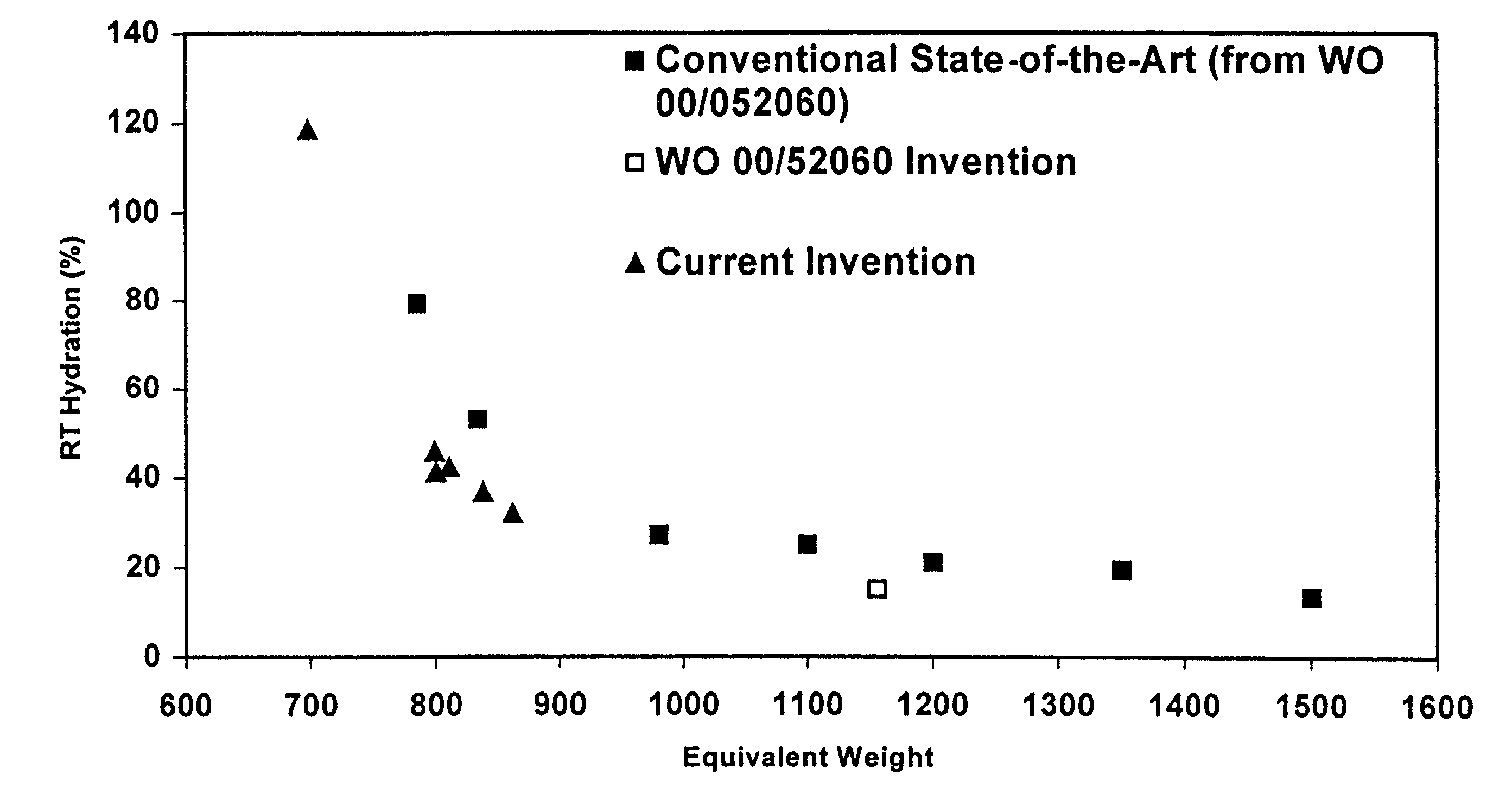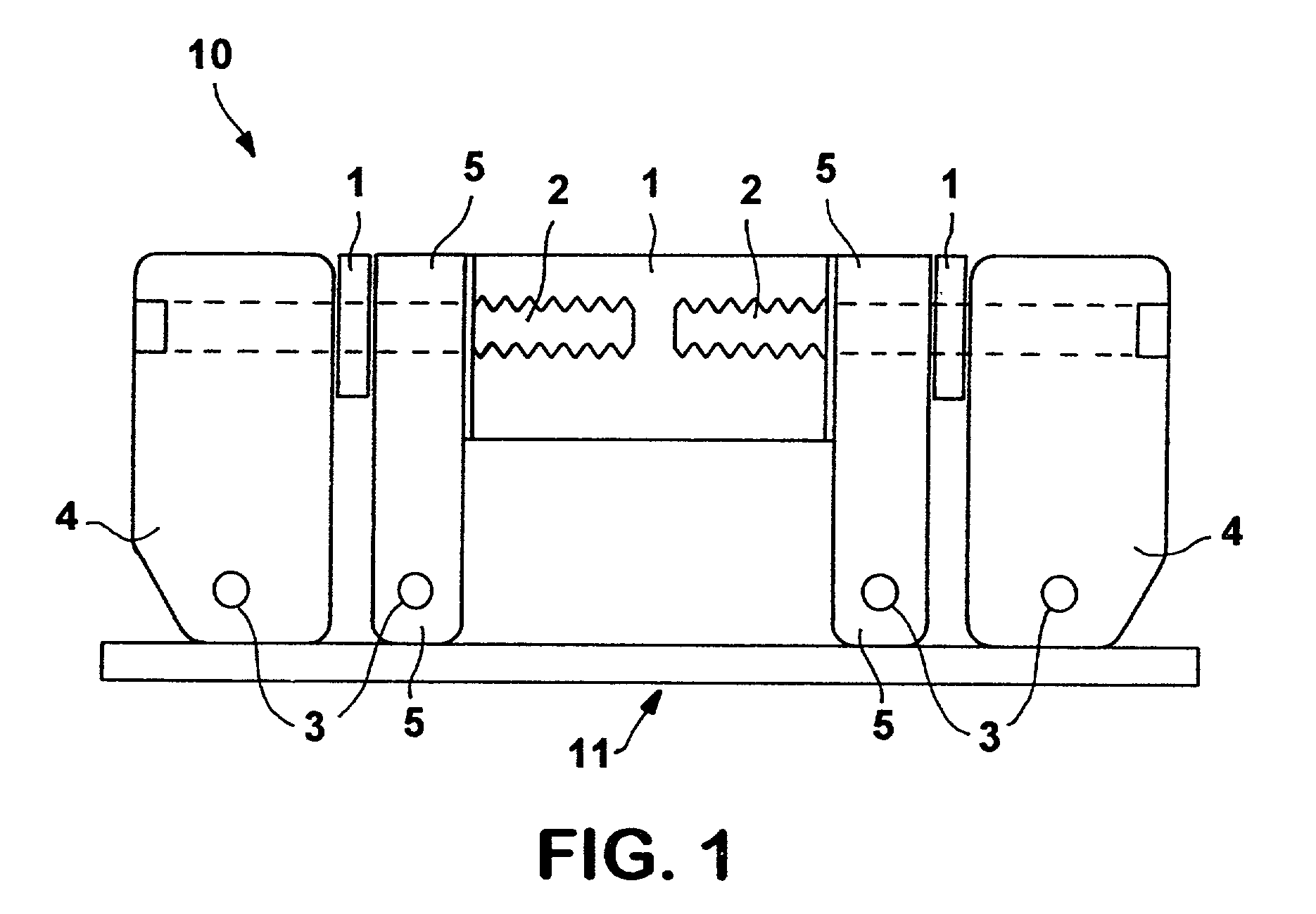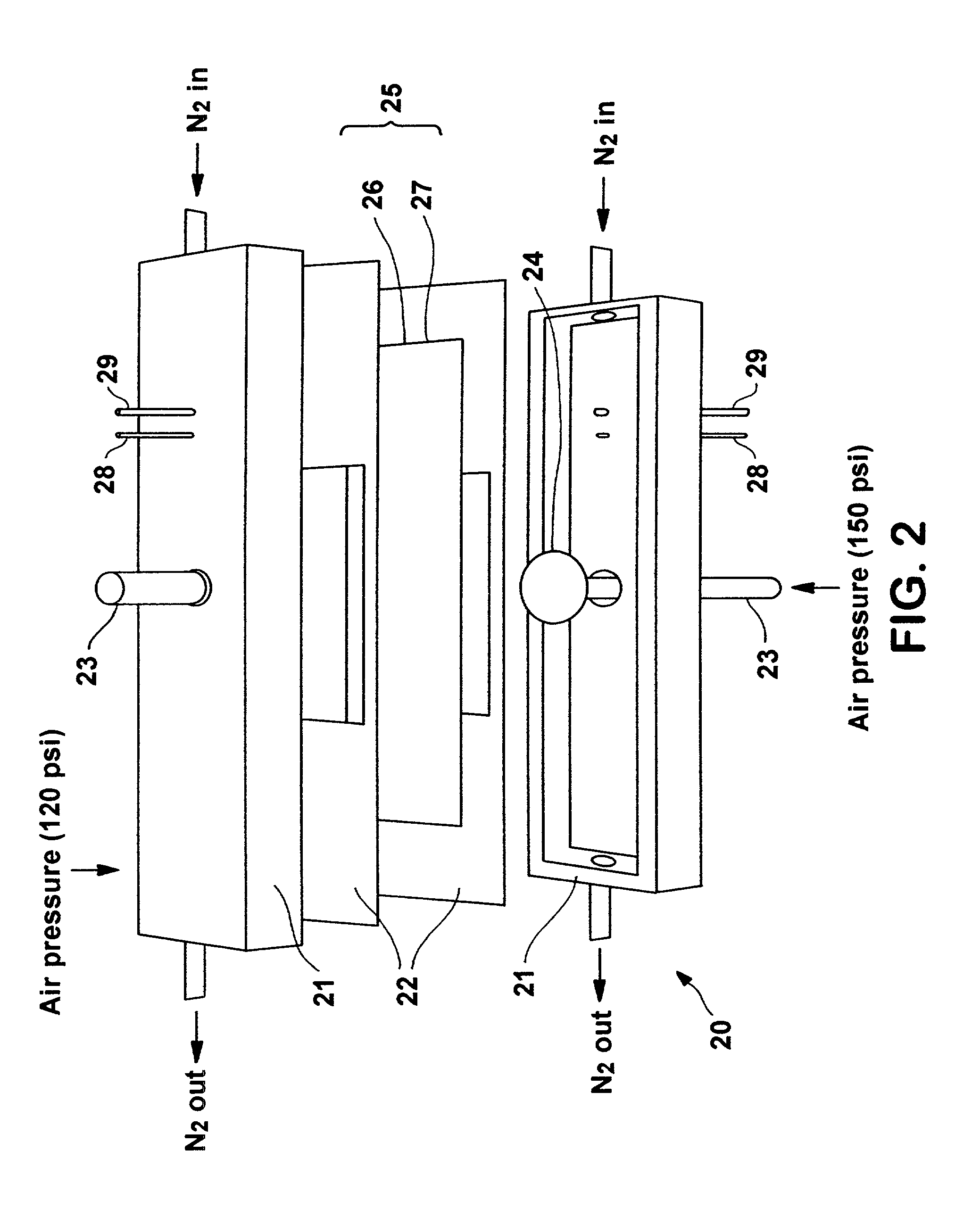Low equivalent weight ionomer
- Summary
- Abstract
- Description
- Claims
- Application Information
AI Technical Summary
Benefits of technology
Problems solved by technology
Method used
Image
Examples
example 1
[0055]An aqueous mini-emulsion was prepared by pre-mixing and homogenization of a mixture containing 1650 grams of deionized water, and 50 grams of 20% by weight of ammonium perfluoro octanoate (ammonium salt of perfluoro octanoic acid) aqueous solution, and 194 grams of 82.5% by weight of CF2═CF—O—CF 2CF(CF3)—O—CF2CF2—SO2F monomer and 17.5% by weight of Fluorinert® FC-77 (a perfluorinated hydrocarbon, manufactured by 3M). A mini-emulsion was formed using the homogenizing module of a microfluidizer. An air motor using compressed air of about 40 psi sent the mixture through the homogenizing module. The whole mixture was sent through the homogenizing module six times. The final mixture was a translucent aqueous mini-emulsion of very light blue color. The aqueous mini-emulsion was then added to a 4-liter reactor. The reactor was evacuated three times and purged each time with tetrafluoroethylene gas. The oxygen content of the aqueous solution was about 20 ppm immediately prior to admit...
examples 2 – 5
EXAMPLES 2–5
[0057]An aqueous mini-emulsion of polymer was prepared using a procedure similar to that of Example 1, but the polymerization was performed in a 30 liter reactor. Several reactions were performed at different reaction times and reactions pressures as shown in Table 1. In particular, an aqueous emulsion was prepared by pre-mixing 14,900 grams of deionized water, and 375 grams of 20% by weight of ammonium perfluoro octanoate (ammonium salt of perfluoro octanoic acid) aqueous solution, and 1200 grams of CF2═CF—O—CF2CF(CF3)—O—CF2CF2—SO2F monomer and 300 grams of Fluorinert® FC-77 (a perfluorinated hydrocarbon, manufactured by 3M). This mixture was homogenized to form a mini-emulsion using the same procedure described in Example 1. The aqueous mini-emulsion was then added to a 30 liter pressure reactor. The reactor was evacuated three times and purged each time with tetrafluoroethylene gas. The oxygen content of the aqueous solution was about 20 ppm immediately prior to admit...
PUM
| Property | Measurement | Unit |
|---|---|---|
| Fraction | aaaaa | aaaaa |
| Fraction | aaaaa | aaaaa |
| Fraction | aaaaa | aaaaa |
Abstract
Description
Claims
Application Information
 Login to View More
Login to View More - R&D
- Intellectual Property
- Life Sciences
- Materials
- Tech Scout
- Unparalleled Data Quality
- Higher Quality Content
- 60% Fewer Hallucinations
Browse by: Latest US Patents, China's latest patents, Technical Efficacy Thesaurus, Application Domain, Technology Topic, Popular Technical Reports.
© 2025 PatSnap. All rights reserved.Legal|Privacy policy|Modern Slavery Act Transparency Statement|Sitemap|About US| Contact US: help@patsnap.com



